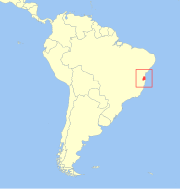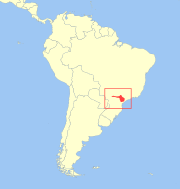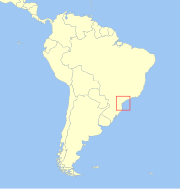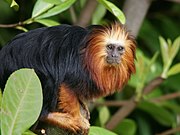Superregnum: Eukaryota
Cladus: Unikonta
Cladus: Opisthokonta
Cladus: Holozoa
Regnum: Animalia
Subregnum: Eumetazoa
Cladus: Bilateria
Cladus: Nephrozoa
Superphylum: Deuterostomia
Phylum: Chordata
Subphylum: Vertebrata
Infraphylum: Gnathostomata
Megaclassis: Osteichthyes
Cladus: Sarcopterygii
Cladus: Rhipidistia
Cladus: Tetrapodomorpha
Cladus: Eotetrapodiformes
Cladus: Elpistostegalia
Superclassis: Tetrapoda
Cladus: Reptiliomorpha
Cladus: Amniota
Cladus: Synapsida
Cladus: Eupelycosauria
Cladus: Sphenacodontia
Cladus: Sphenacodontoidea
Cladus: Therapsida
Cladus: Theriodontia
Cladus: Cynodontia
Cladus: Eucynodontia
Cladus: Probainognathia
Cladus: Prozostrodontia
Cladus: Mammaliaformes
Classis: Mammalia
Subclassis: Trechnotheria
Infraclassis: Zatheria
Supercohors: Theria
Cohors: Eutheria
Infraclassis: Placentalia
Cladus: Boreoeutheria
Superordo: Euarchontoglires
Ordo: Primates
Subordo: Haplorhini
Infraordo: Simiiformes
Parvordo: Platyrrhini
Familia: Callitrichidae
Genus: Leontopithecus
Species:
L. rosalia - L. chrysomelas - L. chrysopygus - L. caissaraName
Leontopithecus Lesson, 1840
Gender
masculine
Synonyms
Leontideus Cabrera, 1956
Leontocebus Elliot, 1913
Type species
Leontopithecus Lesson: Leontopithecus marikina Lesson, 1840 [=Simia rosalia Linnaeus, 1766], by subsequent designation by Pocock (1917: 255)
References
Kleiman, D.G. 1981: Leontopithecus rosalia. Mammalian species, (148) JSTOR
Vernacular names
English: lion tamarins
ไทย: ลิงไลออนทามาริน
The four species of lion tamarins or maned marmosets make up the genus Leontopithecus. They are small New World monkeys named for the mane surrounding their face, similar to the mane of a lion.
Description
Living in the eastern rainforests of Brazil, like all other callitrichids they are arboreal. Lion tamarins weigh up to 900 grams (32 oz) and are about 30 cm (12 in) long, with tails about 45 cm (18 in) long. They jump through trees using their fingers to hold on to branches; they use their claws to dig under the bark to search for insects to eat. They also eat some snakes, small lizards, and small fruits. All are endangered or critically endangered, in part because their habitat has been severely disrupted by human development and climate change[citation needed].
Lion tamarins tend to live in family groups, with both parents sharing different tasks of rearing the yearly twins born to them. The mother nurses her young every two to three hours, and the father carries the babies on his back.
Diurnal tree-dwellers, they sleep in tree cavities at night. They also seek shelter during the hottest part of the day.
Species list
The different species of lion tamarins are easily discernible from each other, based upon the coloration of their fur:[1]
| Common name | Scientific name and subspecies | Range | Size and ecology | IUCN status and estimated population |
|---|---|---|---|---|
| Golden lion tamarin
|
Leontopithecus rosalia (Linnaeus, 1766) |
southeastern Brazil |
Size: golden fur all over, mane sometimes darkening or black Habitat: Diet: |
EN
|
| Golden-headed lion tamarin
|
Leontopithecus chrysomelas (Kuhl, 1820) |
Bahia, Brazil |
Size: black fur with golden face, arms, and tail Habitat: Diet: |
EN
|
| Black lion tamarin or golden-rumped lion tamarin
|
Leontopithecus chrysopygus (Mikan, 1823) |
São Paulo, Brazil |
Size: black fur with a dark gold rump Habitat: Diet: |
EN
|
| Superagui lion tamarin or black-faced lion tamarin
|
Leontopithecus caissara Lorini & Persson, 1990 |
southeastern Brazil |
Size: Habitat: golden fur with black face, arms, and tails Diet: |
EN
|
Conservation
Climate change has been affecting the lion tamarins in that cocoa production has taken over their habitat. Mass produced cocoa has been found to thin out surrounding canopy trees in the area. These trees are where lion tamarins mostly reside throughout the day.[citation needed]
See also
Tamarin, genus Saguinus
References
Groves, C. P. (2005). Wilson, D. E.; Reeder, D. M. (eds.). Mammal Species of the World: A Taxonomic and Geographic Reference (3rd ed.). Baltimore: Johns Hopkins University Press. p. 133. ISBN 0-801-88221-4. OCLC 62265494.
Rylands AB, Mittermeier RA (2009). "The Diversity of the New World Primates (Platyrrhini)". In Garber PA, Estrada A, Bicca-Marques JC, Heymann EW, Strier KB (eds.). South American Primates: Comparative Perspectives in the Study of Behavior, Ecology, and Conservation. Springer. pp. 23–54. ISBN 978-0-387-78704-6.
Retrieved from "http://en.wikipedia.org/"
All text is available under the terms of the GNU Free Documentation License





